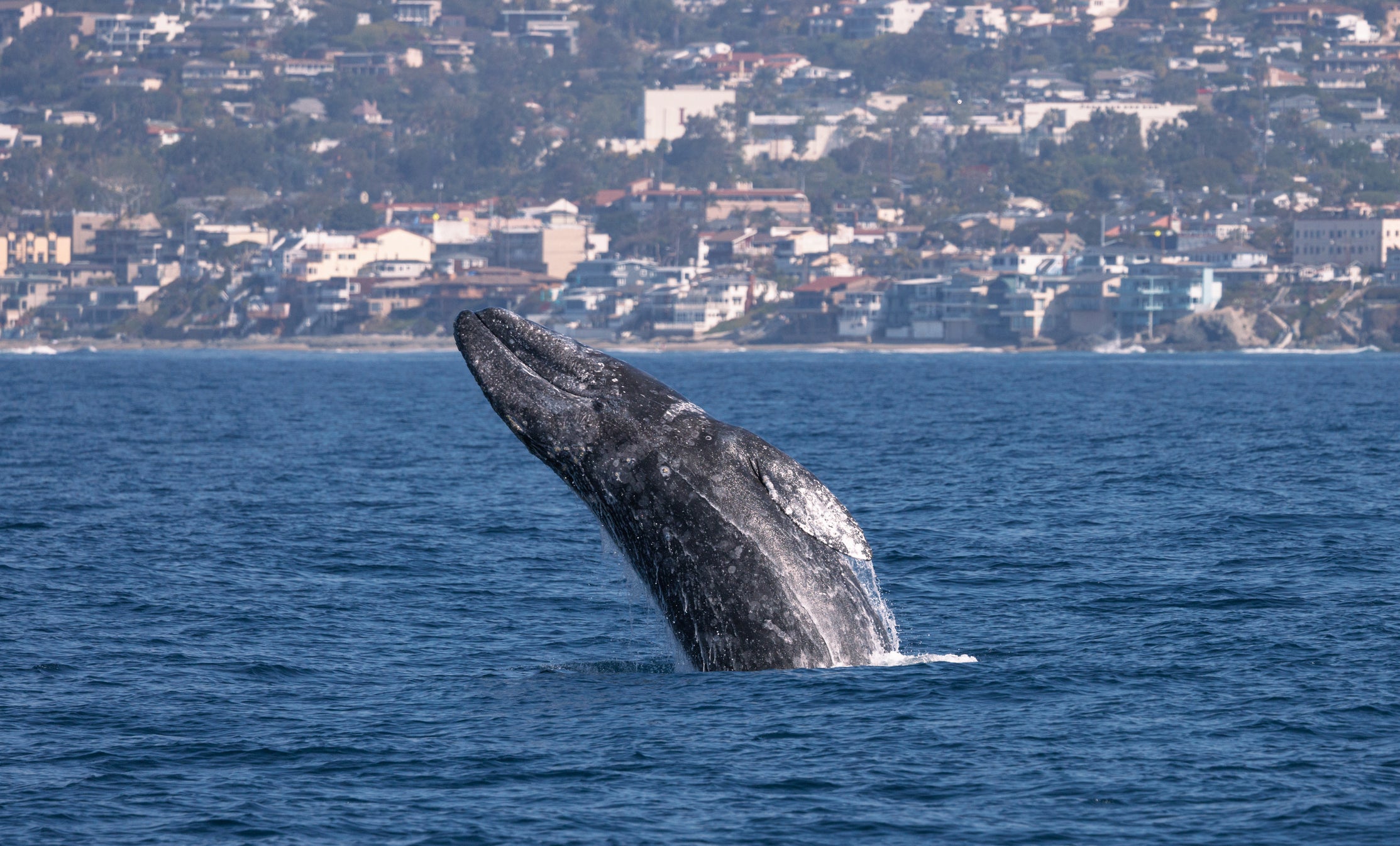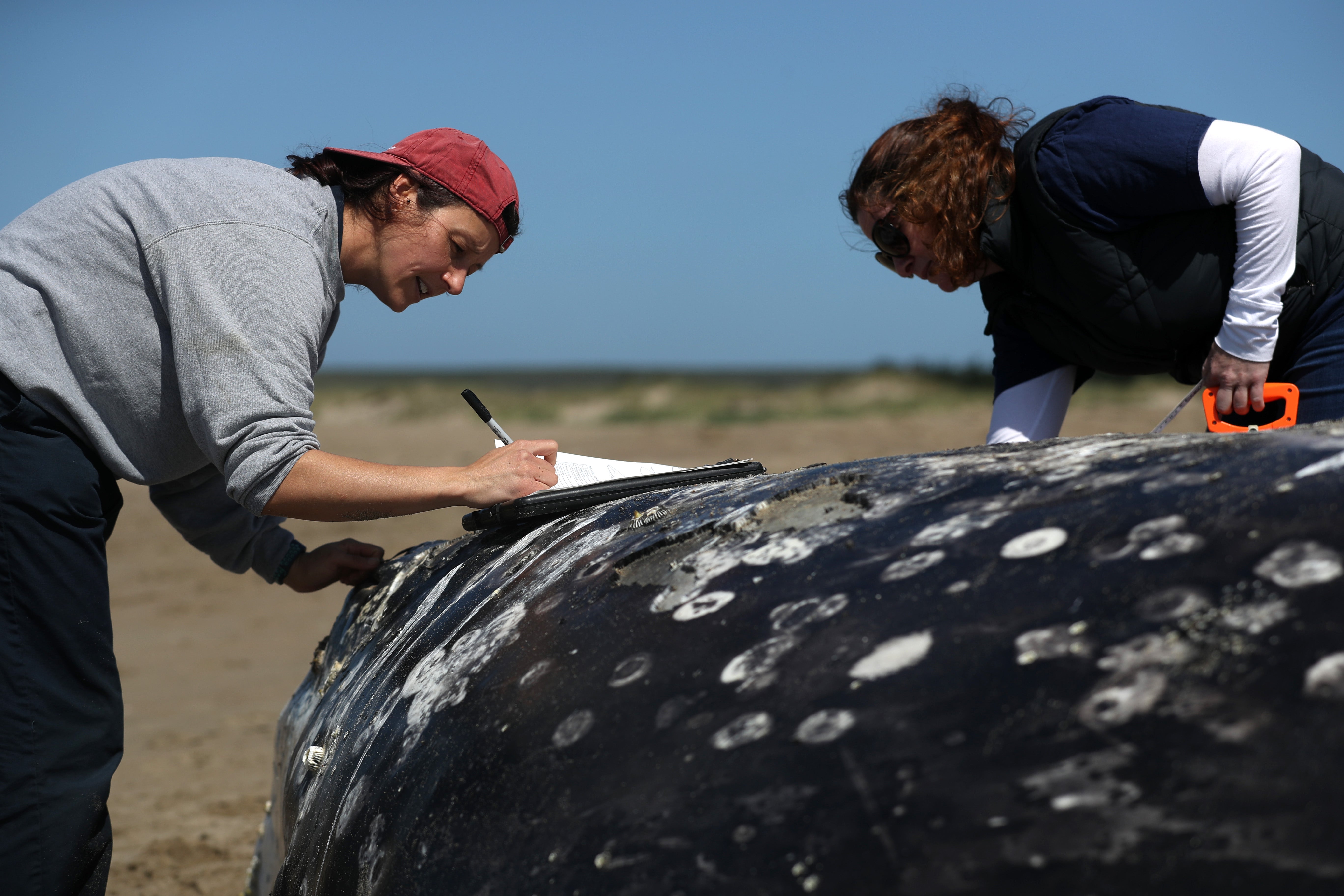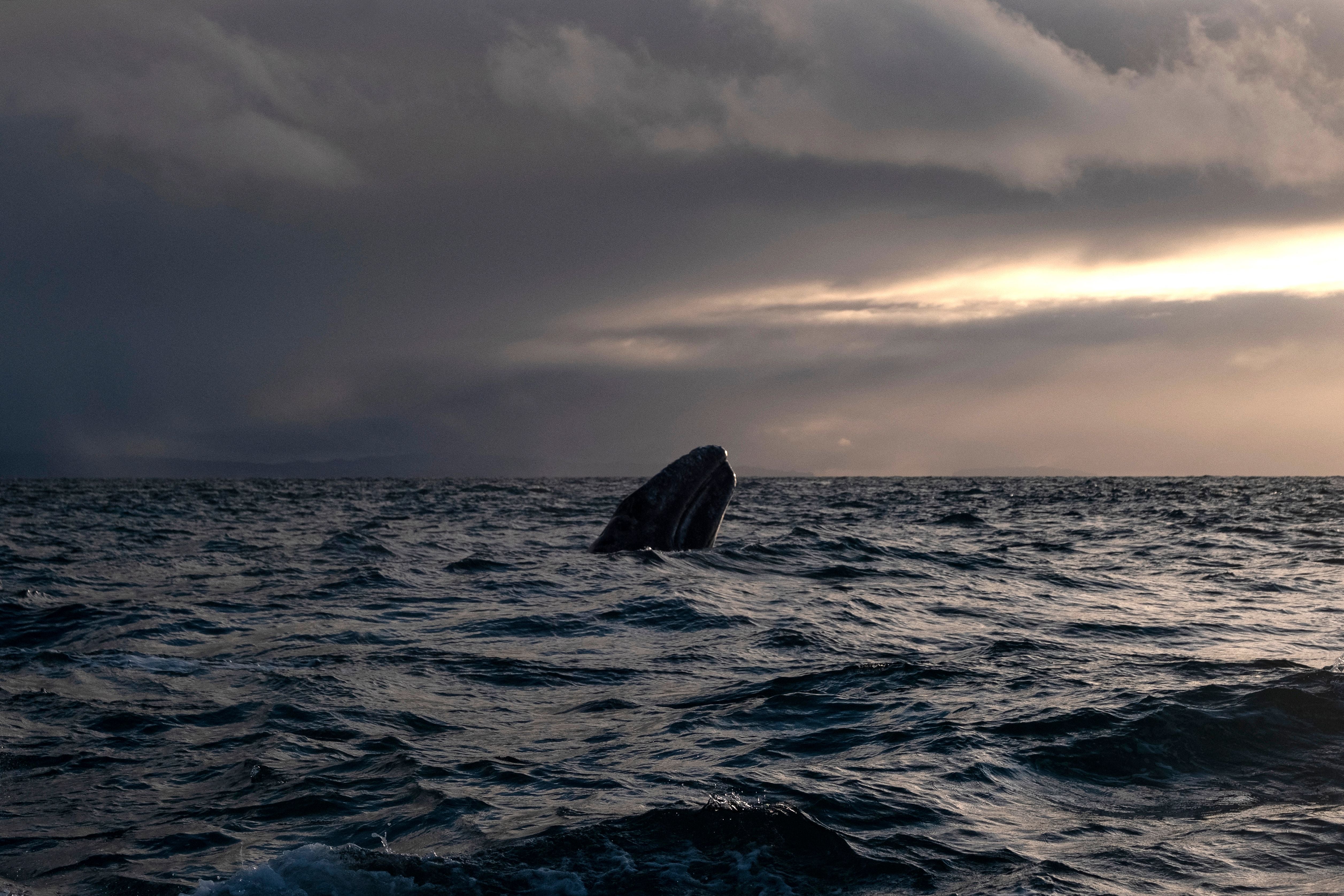Dozens of gray whales are dying in Pacific Ocean waters again this year and human-caused climate change may be to blame, scientists say.
At least 70 whales have died since the start of the year along Mexico’s Baja California peninsula, marine scientist Dr. Steven Swartz told The Los Angeles Times this week. Swartz’s Gray Whale Research in Mexico — an international team of researchers who study the whales in Laguna San Ignacio — have been observing the gentle giants since the 1970s.
He noted that only five mother and calf pairs were identified in Laguna San Ignacio, where wintering whales gather.
“In the winter breeding and calving lagoons of Baja California, however, counts of female calf pairs were the lowest recorded since our abundance surveys in these winter aggregation and breeding areas began in 2006, suggesting a major decline in the reproductive capacity of this population in recent years during the unusual mortality event,” an annual report from his group said.
Swartz’s findings regarding gray whale mortality and reproduction come as several gray whales have recently died in the San Francisco Bay Area during their migration north toward Alaska and their Arctic feeding grounds. One of the whales was described by the Marine Mammal Center as emaciated.

Notably, the number of whale strandings tends to increase as whales head north in March and May, according to the California Academy of Sciences.
The recent strandings also follow an unusual mortality event that was declared in 2019, when hundreds of the Eastern North Pacific Gray Whales beached themselves along the U.S. The National Oceanic and Atmospheric Administration said whale autopsies found nutrition to be a common cause of death. But, the cause of the deaths was never definitively established and the investigation was closed in 2023 as the number of strandings fell. Past research published that year found that previous mass deaths may have been tied to Arctic sea ice loss.
Last winter saw the lowest levels on record for Arctic winter sea ice. Sea ice cover can block whales’ paths, but a loss of sea ice that hosts algae the whales’ eat could be to blame for population hits, Joshua Stewart, an associate professor at Oregon State University and the author of that study, told The Independent.
“It doesn’t feel like too much of a mystery to me,” he said of the recent gray whale deaths, adding they are linked to migratory patterns.

The whales journey some 6,000 miles along the Pacific Coast to the Arctic where they feed in the shallow basin and the seafloor. They’re specifically looking for small crustaceans that live in the sediment. However, the health of those ecosystems is dictated by algae that grow on the underside of sea ice.
When the algae dies, it sinks and reintroduces nutrients to the seafloor. The fertilized ecosystems attract migratory species from all over the world. But if the algae don’t make it to the sea floor, thanks to the ice melting earlier, its nutrients are released closer to the surface. Ultimately, there’s less food for the gray whales.
“And, those Arctic ecosystems are some of the fastest-warming ecosystem on the planet and they’re experiencing really profound changes right now — major regime shifts that are moving away from that benthic productivity to more water column productivity, which could be good for some other whale species, but seems to be extremely bad for gray whales,” he explained.
Gray whales have been much less impacted by human effects such as vessel strikes than other large whale species, Stewart noted, pointing out that federal research is critical to understanding all factors that affect the nearly 50-foot-long creatures.
“So, it seems like almost all of the population fluctuations are being driven by conditions on their feeding grounds in the Arctic. And, some of that is natural variability,” he said.

While gray whales are adaptable and have lived through previous climatic changes — although nothing as rapid as the current changes — Stewart said that there has been a “reproductive failure” and a decline in abundance since 2019. Skinny whales stop investing energy in reproduction, and birth rates drop severely.
“We have exceptionally low reproductive rates every year for the last six years now. And, that’s the difference here, is that this effect is lingering. It’s not a short-term variability that we’ve seen in these previous mortality events. This time, it’s consistent. The population has continued to decline. The birth rates haven’t recovered. Whales are still skinny, and I think that that’s a reflection of really dramatic regime shifts in those Arctic feed grounds, which just means there’s not enough food to support as many gray whales as we had five or 10 years ago,” he said.
Stewart said the status of gray whales is a “harbinger” of what’s to come for marine species.
“In my view, at this point, we’re seeing the effects of climate change on some of these big, charismatic, economically important, culturally important species that we as a society value quite a bit and which we’re going to have to deal with massive declines as a result of our actions,” he said.









